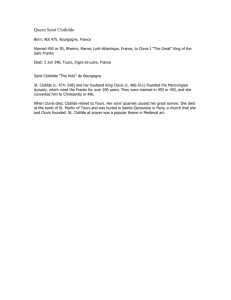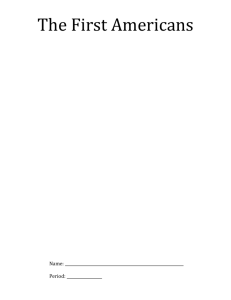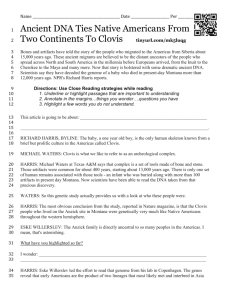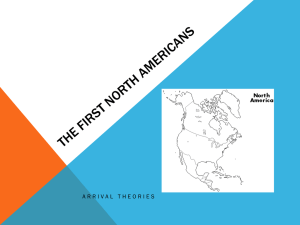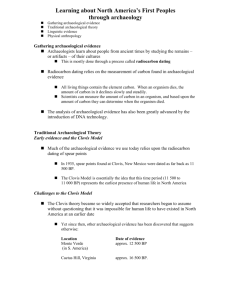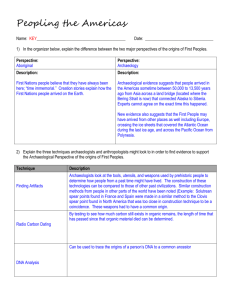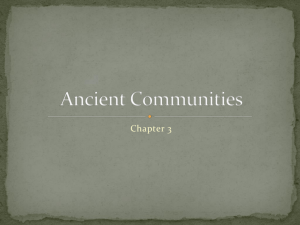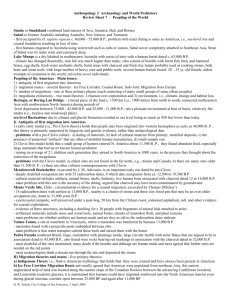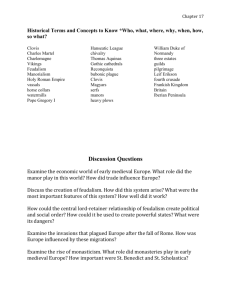Article_-_Finding_the_First_Americans
advertisement
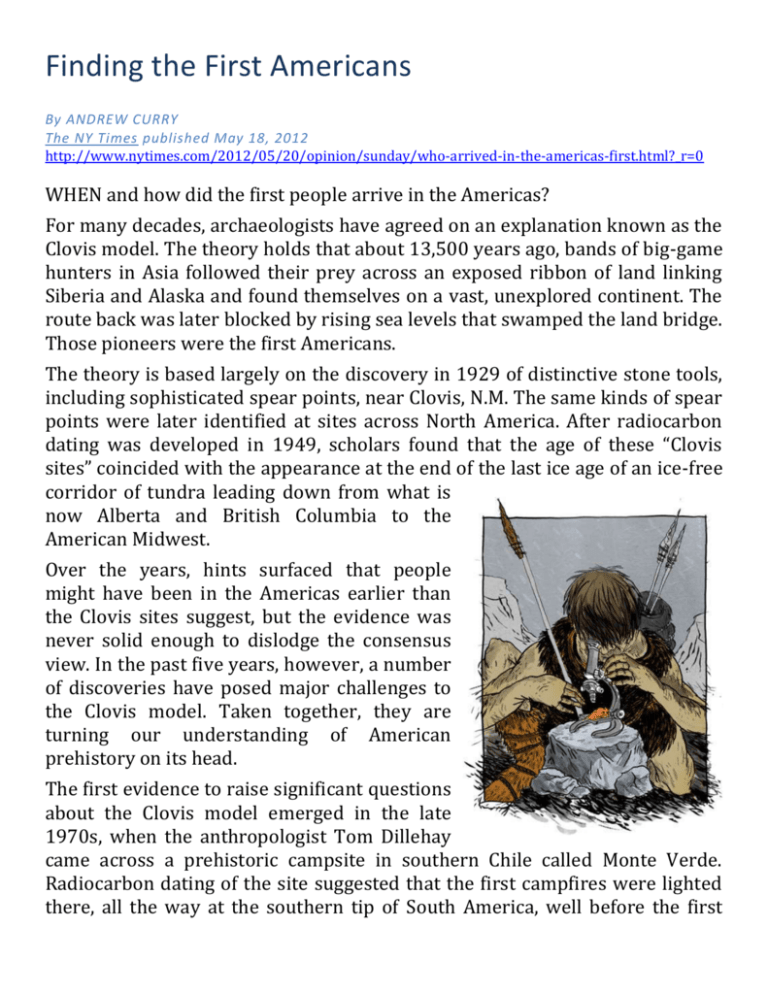
Finding the First Americans By ANDREW CURRY The NY Times published May 18, 2012 http://www.nytimes.com/2012/05/20/opinion/sunday/who-arrived-in-the-americas-first.html?_r=0 WHEN and how did the first people arrive in the Americas? For many decades, archaeologists have agreed on an explanation known as the Clovis model. The theory holds that about 13,500 years ago, bands of big-game hunters in Asia followed their prey across an exposed ribbon of land linking Siberia and Alaska and found themselves on a vast, unexplored continent. The route back was later blocked by rising sea levels that swamped the land bridge. Those pioneers were the first Americans. The theory is based largely on the discovery in 1929 of distinctive stone tools, including sophisticated spear points, near Clovis, N.M. The same kinds of spear points were later identified at sites across North America. After radiocarbon dating was developed in 1949, scholars found that the age of these “Clovis sites” coincided with the appearance at the end of the last ice age of an ice-free corridor of tundra leading down from what is now Alberta and British Columbia to the American Midwest. Over the years, hints surfaced that people might have been in the Americas earlier than the Clovis sites suggest, but the evidence was never solid enough to dislodge the consensus view. In the past five years, however, a number of discoveries have posed major challenges to the Clovis model. Taken together, they are turning our understanding of American prehistory on its head. The first evidence to raise significant questions about the Clovis model emerged in the late 1970s, when the anthropologist Tom Dillehay came across a prehistoric campsite in southern Chile called Monte Verde. Radiocarbon dating of the site suggested that the first campfires were lighted there, all the way at the southern tip of South America, well before the first Clovis tools were made. Still, Professor Dillehay’s evidence wasn’t enough to persuade scholars to abandon the Clovis model. But in 2008, that began to change. That year, researchers from the University of Oregon and the University of Copenhagen recovered human DNA from coprolites — preserved human feces — found in a dry cave in eastern Oregon. The coprolites had been deposited 14,000 years ago, suggesting that Professor Dillehay and others may have been right to place humans in the Americas before the Clovis people. This discovery inspired other scholars to re-examine old finds with new techniques. In the 1970s, for instance, a farmer in Washington State found a mastodon rib with a bone shard lodged in it, as if the mastodon had been killed with a weapon. Since the mastodon remains predated the earliest Clovis sites by eight centuries, the nature of the finding was initially disputed. But in 2011, researchers led by the Texas A&M archaeologist Michael R. Waters announced that by analyzing the rib and the embedded fragment using scanning and modeling techniques, they had confirmed that the embedded bone was a spear point — strongly suggesting that humans in the Americas were hunting the animals with bone-tipped spears long before the end of the ice age. The Clovis model suffered yet another blow last year when Professor Waters announced finding dozens of stone tools along a Texas creekbed. After using a technique that measures the last time the dirt around the stones was exposed to light, Professor Waters concluded, in a paper in Science, that the site was at least 15,000 years old — which would make it the earliest reliably dated site in the Americas. The archaeological evidence challenging the Clovis model is also receiving support from genetic studies. Having compared the DNA of modern American Indians with that of groups living in Asia today, scholars have estimated that the last common ancestor of the two peoples probably lived between 16,000 and 20,000 years ago. That figure doesn’t square with the arrival of the Clovis people from Asia only 13,500 years ago. Where does this leave us? We now know people were in the Americas earlier than 14,000 years ago. But how much earlier, and how did they get to a continent sealed off by thick sheets of ice? Working theories vary. Some scholars hypothesize that people migrated from Asia down the west coast of North America in boats. Others suggest variations on the overland route. One theory even argues that some early Americans might have come by boat from Europe via the North Atlantic, despite the fact that the DNA of modern American Indians does not suggest European origins. After 80 years under Clovis’s spell, scholars are once again venturing into unknown territory — and no one is ready to rule anything out yet.
